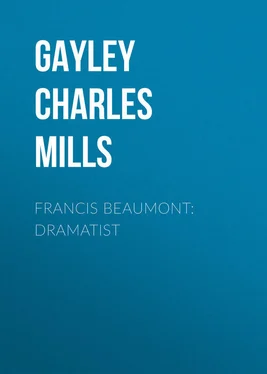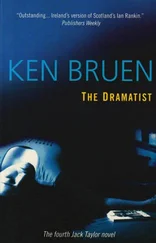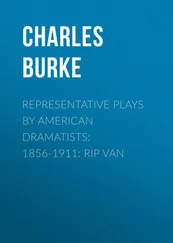Charles Gayley - Francis Beaumont - Dramatist
Здесь есть возможность читать онлайн «Charles Gayley - Francis Beaumont - Dramatist» — ознакомительный отрывок электронной книги совершенно бесплатно, а после прочтения отрывка купить полную версию. В некоторых случаях можно слушать аудио, скачать через торрент в формате fb2 и присутствует краткое содержание. Жанр: cinema_theatre, foreign_antique, foreign_prose, Биографии и Мемуары, на английском языке. Описание произведения, (предисловие) а так же отзывы посетителей доступны на портале библиотеки ЛибКат.
- Название:Francis Beaumont: Dramatist
- Автор:
- Жанр:
- Год:неизвестен
- ISBN:нет данных
- Рейтинг книги:5 / 5. Голосов: 1
-
Избранное:Добавить в избранное
- Отзывы:
-
Ваша оценка:
- 100
- 1
- 2
- 3
- 4
- 5
Francis Beaumont: Dramatist: краткое содержание, описание и аннотация
Предлагаем к чтению аннотацию, описание, краткое содержание или предисловие (зависит от того, что написал сам автор книги «Francis Beaumont: Dramatist»). Если вы не нашли необходимую информацию о книге — напишите в комментариях, мы постараемся отыскать её.
Francis Beaumont: Dramatist — читать онлайн ознакомительный отрывок
Ниже представлен текст книги, разбитый по страницам. Система сохранения места последней прочитанной страницы, позволяет с удобством читать онлайн бесплатно книгу «Francis Beaumont: Dramatist», без необходимости каждый раз заново искать на чём Вы остановились. Поставьте закладку, и сможете в любой момент перейти на страницу, на которой закончили чтение.
Интервал:
Закладка:
What John Fletcher, – a lad of seventeen, when, in 1596, he was turned out of Fulham Palace and his father's private house in Chelsea, with its carpets and cushions and the special "stayre and dore made of purpose … in a bay window" for the entrance of Queen Elizabeth when she might deign, or did deign, to visit her unruly prelate, – what the lad of seventeen did for a living before we find him, about 1606 or 1607, in the ranks of the dramatists, we have no means of knowing. Perhaps the remaining years of his boyhood were spent with his uncle, Giles, and his young cousins, the coming poets, or with the aunt whom his father called "sister Pownell." The stepmother of eighteen months' duration is not likely with her luxurious tastes and questionable character to have tarried long in charge of the eight "poore and fatherless children." She had children of her own by her previous marriage, in whom to seek consolation, Grisogone and Cicely Baker, then in their twenties, and devoted to her. 44 44 As her monument in Canterbury would indicate. Hasted, Hist. Kent , XI, 397.
And with one or both we may surmise that she resumed her life in Kent, or with the heir of sleepy Sissinghurst, making the most of her carpets and cushions and such of her "thirds" as she could recover, until – for she was but forty-seven – she might find more congenial comfort in a third marriage. Her permanent consoler was a certain Sir Stephen Thornhurst of Forde in the Isle of Thanet; and he, thirteen years after the death of her second husband, buried her in state in Canterbury Cathedral, 1609.
In 1603 her sister-in-law, Cicely (Baker) Sackville, now Countess of Dorset and the Earl, her husband, that fine old dramatist of Beaumont's Inner Temple, and former acquaintance at Fotheringay of John Fletcher's father, had taken possession of the manor of Knole, near Sevenoaks in Kent, where their descendants live to-day. Before 1609, Fletcher's stepsister Cicely, named after her aunt, the Countess, had become the Lady Cicely Blunt. Grisogone became the Lady Grisogone Lennard, having married, about 1596, a great friend of William Herbert, Earl of Pembroke, and of his Countess (Sir Philip Sidney's sister), Sir Henry, the son of Sampson Lennard of Chevening and Knole. The Lennard estate lay but three and a half miles from that of their connections, the Dorsets, of Knole Park. If young Fletcher ever went down to see his stepmother at Sissinghurst, or his own mother's family in Cranbrook, he was but twenty-six miles by post-road from Chevening and still less from Aunt Cicely at Knole. Beaumont, himself, as we shall see, married the heiress of Sundridge Place a mile and a half south of Chevening, and but forty minutes across the fields from Knole. His sister Elizabeth, too, married a gentleman of one of the neighbouring parishes. The acquaintance of both our dramatists with Bakers and Sackvilles was enhanced by sympathies literary and dramatic. A still younger Sir Richard Baker, cousin to John Fletcher's stepsisters, and to the second and third Earls of Dorset, was an historian, a poet, and a student of the stage – on familiar terms with Tarleton, Burbadge, and Alleyn. And the literary traditions handed down from Thomas Sackville, the author of Gorboduc and The Mirror for Magistrates were not forgotten by his grandson, Richard, third Earl of Dorset, the contemporary of our dramatists, – for whom, if I am not mistaken, their portraits, now hanging in the dining-room of the Baron Sackville at Knole, were painted. 45 45 For the Bakers and their connections, see Hasted, Hist. Kent , III, 77; IV, 374, et seq. ; VII, 100-101; for the Sackvilles. – Hasted, III, 73-82; for the Lennards, – Hasted, III, 108-116; the Peerages of Collins, Burke, etc., and the articles in D. N. B. See also, below, Appendix, Table E.
I have dwelt thus at length upon the conditions antecedent to, and investing, the youth of Beaumont and of Fletcher, because the documents already at hand, if read in the light of scientific biography and literature, set before us with remarkable clearness the social and poetic background of their career as dramatists. When this background of birth, breeding, and family connection is filled in with the deeper colours of their life in London, its manners, experience, and associations, one may more readily comprehend why Dryden says in comparing them with Shakespeare, "they understood and imitated the conversation of gentlemen [of contemporary fashion] much better; whose wild debaucheries and quickness of wit in repartees, no poet before them could paint as they have done."
CHAPTER VI
SOME EARLY PLAYS OF BEAUMONT AND OF FLETCHER
Beaumont and Fletcher may have been friends by 1603 or 1604, – in all likelihood, as early as 1605 when, as we have seen, Drayton and other "southern Shepherds" were by way of visiting the Beaumonts at Grace-Dieu. In that year Jonson's Volpone was acted for the first time; and one may divine from the familiar and affectionate terms in which our two young dramatists address the author upon the publication of the play in 1607 that they had been acquainted not only with Jonson but with one another for the two years past. We have no satisfactory proof of their coöperation in play-writing before 1606 or 1607. According to Dryden, – whose statements of fact are occasionally to be taken with a grain of salt, but who, in this instance, though writing almost sixty years after the event, is basing his assertion upon first-hand authority, – "the first play that brought 'them' in esteem was their Philaster ," but "before that they had written two or three very unsuccessfully." Philaster , as I shall presently show, was, in all probability, first acted between December 7, 1609 and July 12, 1610. Before 1609, however, each had written dramas independently, Beaumont The Woman-Hater and The Knight of the Burning Pestle ; Fletcher, The Faithfull Shepheardesse , and maybe one or two other plays. Our first evidence of their association in dramatic activity is the presence of Fletcher's hand, apparently as a reviser, in three scenes of The Woman-Hater , which was licensed for publication May 20, 1607, as "lately acted by the Children of Paul's." From contemporary evidence we know, as did Dryden, that two of these plays, The Knight and Faithfull Shepheardesse were ungraciously received; and Richard Brome, about fourteen years after Fletcher's death, suggests that perhaps Monsieur Thomas shared "the common fate."
The Woman-Hater was the earliest play of either of our dramatists to find its way into print. Drayton's lines, already referred to, about "sweet Palmeo" imply that Beaumont was already known as a poet, before April 1606. A passage in the Prologue of The Woman-Hater seems, as Professor Thorndike has shown, to refer to the narrow escape of Jonson, Chapman, and Marston from having their ears cropped for an offense given to the King by their Eastward Hoe . If it does, "he that made this play," undoubtedly Beaumont, made it after the publication of Eastward Hoe in 1605. The title-page of 1607 says that the play is given "as it hath been lately acted." The ridicule of intelligencers emulating some worthy men in this land "who have discovered things dangerously hanging over the State" has reference to the system of spying which assumed enormous proportions after the discovery of the Gunpowder Plot in November 1605. An allusion to King James's weakness for handsome young men, "Why may not I be a favourite in the sudden?" may very well refer, as Fleay has maintained, to the restoration to favour of Robert Ker (or Carr) of Ferniehurst, afterwards Earl Somerset, – a page whom James had "brought with him from Scotland, and brought up of a child," 46 46 The King's letter to Salisbury (undated, but of 1608). Gardiner, Hist. Engl. 1603-1642, II, 43-45.
but had dismissed soon after his accession. It was at a tilting match, March 24, 1607, that the youth "had the good fortune to break his leg in the presence of the King," and "by his personal activity, strong animal spirits," and beauty, to attract his majesty anew, and on the spot. The beauty, Beaumont emphasizes as a requisite for royal favour. "Why may not I be a favourite on the sudden?" says the bloated, hungry courtier, "I see nothing against it." "Not so, sir," replies Valore; "I know you have not the face to be a favourite on the sudden." The fact that James did not make a knight bachelor of Carr till December of that year, would in no way invalidate a fling at the favour bestowed upon him in March. Indeed Beaumont's slur in The Woman-Hater upon "the legs … very strangely become the legs of a knight and a courtier" might have applied to Carr as early as 1603, for on July 25 of that year James had made him a Knight of the Bath, – in the same batch, by the way, with a certain Oliver Cromwell of Huntingdonshire. 47 47 This much more distinguished favour has been overlooked by Thorndike and other critics. But it is possible that Shaw, Knights of England , I, 154, may be confounding him with another Carr, a favourite of Queen Anne's.
Without violating the plague regulations, as laid down by the City, The Woman-Hater could have been acted during the six months following November 20, 1606. A passage in Act III, 2, 48 48 Dyce, B. and F. , Vol. I, p. 53.
which I shall presently quote in full, is, as has not previously been noticed, a manifest parody of one of Antony's speeches in Antony and Cleopatra 49 49 Act IV, 14, 50-54.
which, according to all evidence, was not acted before 1607. It would appear, therefore, that Beaumont's first play was completed after January 1, 1607, probably after March 24, when Carr regained the royal favour, and was presented for the first time during the two months following the latter date.
Интервал:
Закладка:
Похожие книги на «Francis Beaumont: Dramatist»
Представляем Вашему вниманию похожие книги на «Francis Beaumont: Dramatist» списком для выбора. Мы отобрали схожую по названию и смыслу литературу в надежде предоставить читателям больше вариантов отыскать новые, интересные, ещё непрочитанные произведения.
Обсуждение, отзывы о книге «Francis Beaumont: Dramatist» и просто собственные мнения читателей. Оставьте ваши комментарии, напишите, что Вы думаете о произведении, его смысле или главных героях. Укажите что конкретно понравилось, а что нет, и почему Вы так считаете.












